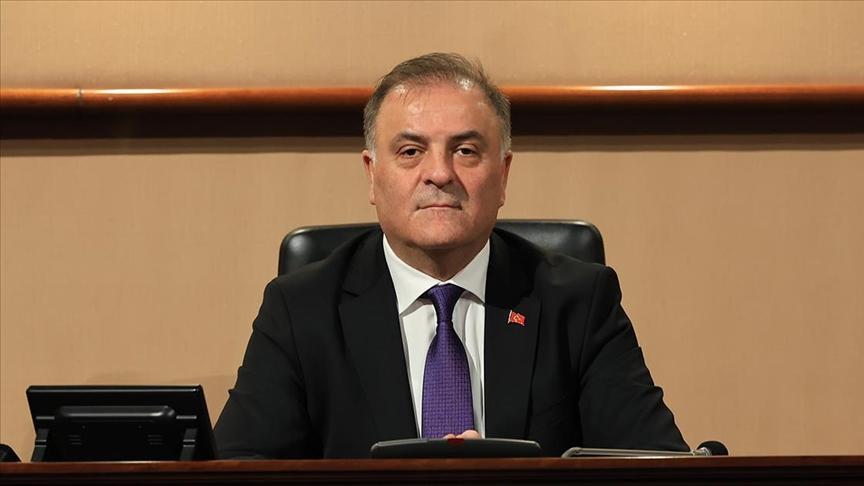Unique Roman emperor statue revealed in Denizli
DENİZLİ

Archaeologists in the ancient city of Laodicea in the western province of Denizli have unearthed a grandiose statue of Trajan, one of the greatest Roman emperors, dating back to 113 A.D.
The statue is likely to be reputed as one of the most unique of its kind in terms of its size and intricacy. The three-meter-high sculpture was unearthed in 356 pieces, all of which were stuck together. Next to the emperor and standing on the same patio is another statue, much smaller in size, depicting an enemy soldier with hands tied behind the back.
Excavations have been carried out under the leadership of Professor Celal Şimşek in the ancient city.
Stating that the sculpture was among the most important artifacts unearthed in the ancient during excavations over the last 15 years, Şimşek said: “The most important and longest inscription of the ancient era, the ‘Water Law’ was also unearthed along with this sculpture.”
“We found that it was made in 113 A.D. given that the emperor died in 117. There had been many Hadrian sculptures unearthed so far, but such emperor Trajan sculptures is of high-quality. It must have been made by an artist who saw the emperor in person. The portrait features on his face are really intricate and detailed. Trajan was a real soldier emperor and expanded the Roman Empire to its farthest limits. He also made the empire very rich,” the professor added.
The statue depicts Trajan wearing a short chiton and has a cloth falling from his left shoulder, which, according to Şimşek, is worthy of attention.
“The images on the armor can be observed very clearly. On the upper part of the armor, there is the thunder of Jupiter, the celestial god of thunder. Medusa is located right in the middle of the chest, which is important because it shows the emperor’s frightening side. There are two reciprocal griffons [a legendary creature with the body, tail, and back legs of a lion], which are the symbol of the god Apollo. We see Apollo as the god that protected the fine arts. With this, what to comes to mind is that the emperor did protect fine arts at his time,” he said.
“There is a water can in the middle. The griffons stretched their front legs towards the water bowl. Given the Water Law, it shows that he was an emperor who brought waterway to Laodicea with arches and pipes made of travertine. He gave 30,000 Denarius. I matched it with today’s money, and it is about 300,000 Turkish Liras. After that, because Laodicea was a very rich city, they built a great statue and put it at this fountain. Perhaps people from all over the world will come and see this work here. This statue is important in this aspect. Indeed, in terms of both proportion and portrait, we are truly happy to find this statue of the emperor,” he added.
The statue had broken into 356 pieces after a destructive earthquake, burying them all under the fountain which it stands on today. The finding is unique and unprecedented in the world, and is believed to be exactly 1906 years old.
















